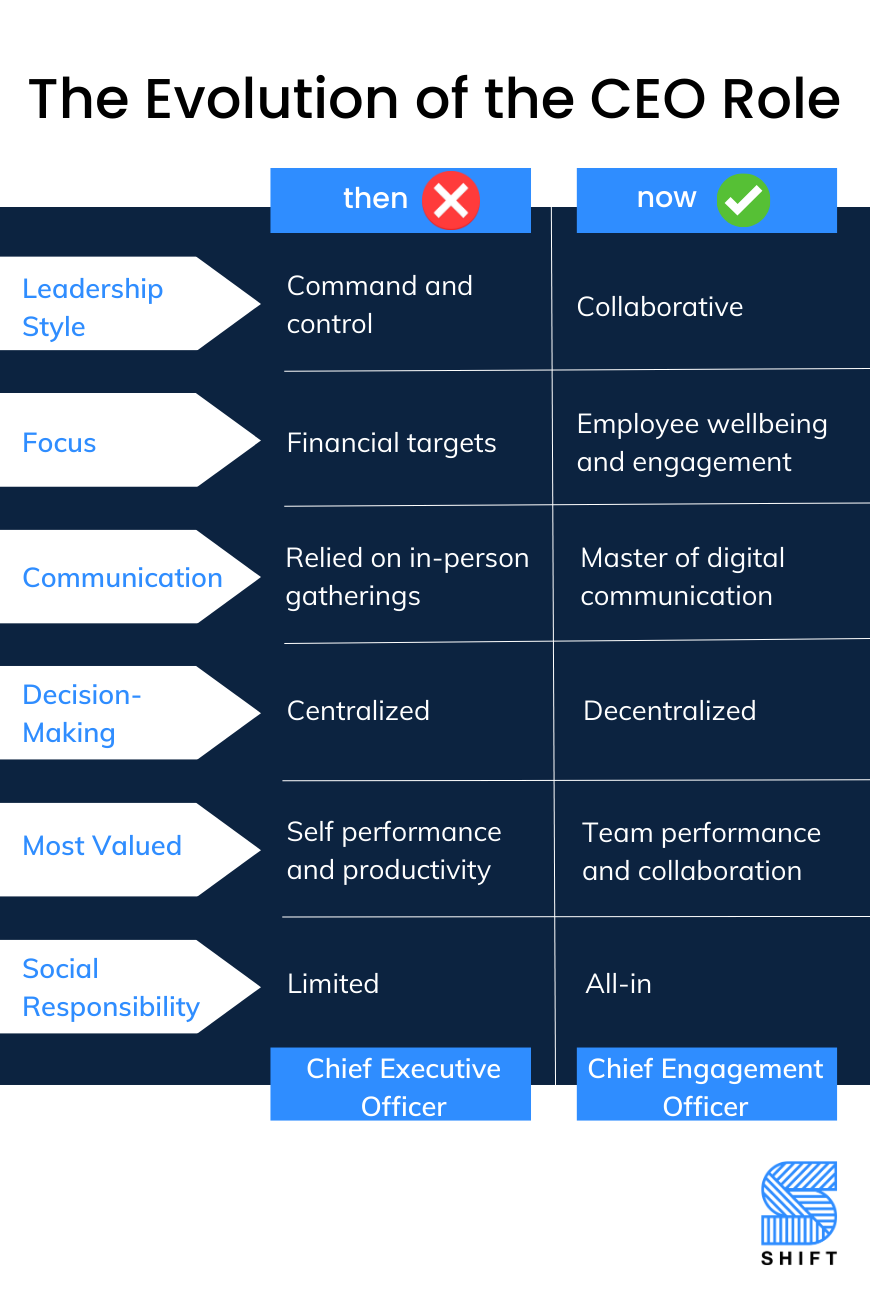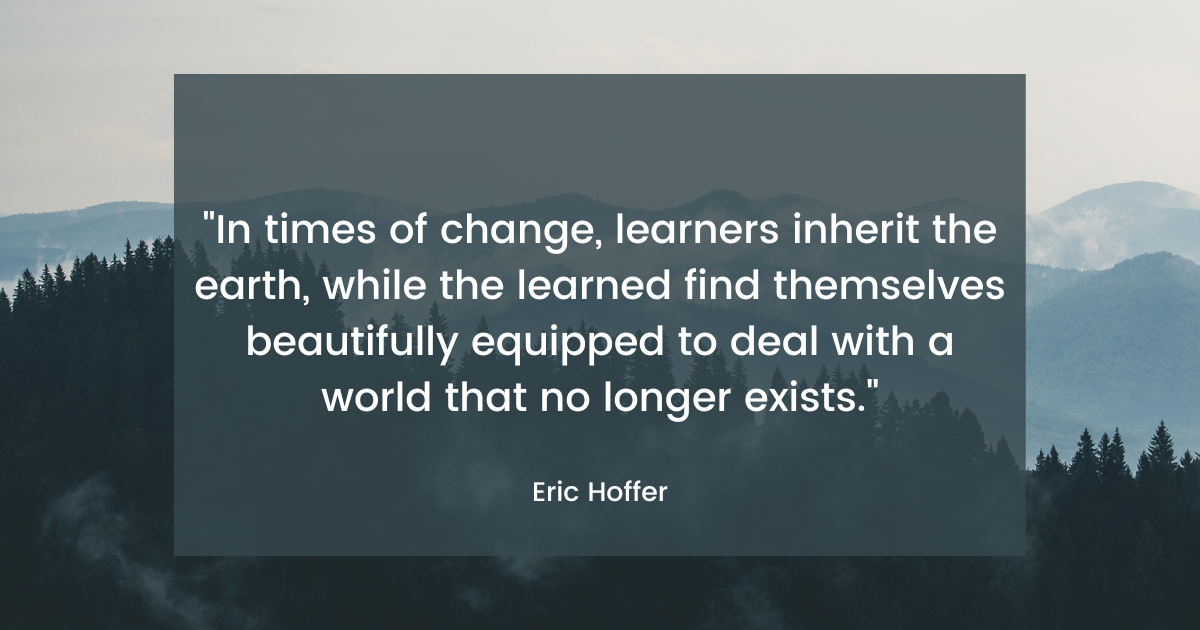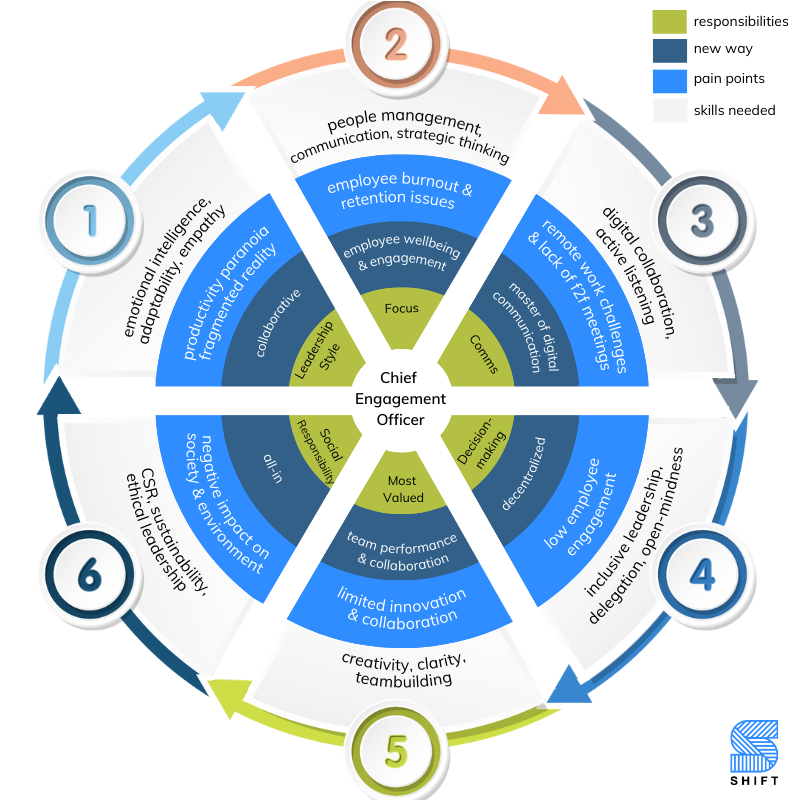If it’s raining outside, it’s on you to bring an umbrella.
If it’s snowing, it’s your responsibility to wear a hat and jacket.
If your team is no longer in an office, Monday through Friday from 9-5, then how has the role of the CEO changed?
Like the frog in boiling water, sometimes it’s hard to read the label of the jar you are in.
In reality, the label on the jar, the jar itself, and the boiling water have all changed. The question is now whether the frog will adapt.

Before the pandemic, if we are being honest, a lot of people might have told themselves they wanted to be the CEO.
For many, the title of Chief Executive Officer (CEO) carries an air of prestige and power.
However, we know the job is far different than what many may have initially imagined.
Over the past year, the COVID-19 pandemic has forced CEOs to confront a new set of challenges that have fundamentally altered the nature of their work.
With the shift to hybrid work, CEOs are now grappling with productivity paranoia and fragmented reality – creating a major distance with their employees.
As a result, the role of the CEO must evolve from Chief Executive Officer to Chief Engagement Officer.

In our 20+ years of working with CEOs, we have never seen the look of fatigue, fear, and frustration quite like this before.
In a conversation with a CEO recently, this is what they said:
“I'm trying to be the best leader I can, but it feels like nothing is going right. I gave working from home and hybrid work a chance, but it just didn't work for us. Our productivity has taken a hit, and our employees are feeling disconnected and unmotivated. I've tried everything from team-building exercises to implementing new technology, but nothing seems to work.
Now that Amazon's CEO is making everyone come back, I'm starting to feel like maybe I should follow suit. I hate the idea of defaulting everyone back into the office, but it feels like I have no other choice. I feel defeated and insecure as a leader, like I'm back to square one. The old tools of a carrot and stick don't seem to be working at all.
I want to be a good leader, but it seems like everything is against me. I know I need to make some changes, but I'm not sure what to do next. I feel like I'm failing my team, and it's a terrible feeling. Maybe if I can't beat them, I should join them, but I can't help but feel like there's a better way.”
So What Can CEOs Do?
As we continue to navigate the changes brought about by hybrid work, it's important for CEOs to consider the perspectives of other leaders in the industry.
While the shift to remote work may have initially seemed like a solution to many problems, there are valid arguments for returning to the office.
Amazon's CEO, Andy Jassy, makes a compelling case for the benefits of in-person work, such as the ease of collaboration and the ability to strengthen company culture.
As we know, change can be difficult – especially when it's paired with uncertainty.
Our brains are built to adapt to new circumstances, but it's the unpredictability of the future that can make us feel uneasy. In times of rapid change and conflicting messages, it's crucial to focus on what works. This requires a shift in mindset from the learned to the learners.

Remember you are searching for a solution that works for you, no one else.
Think of it as the next mini experiment… for now. Because nothing is permanent.
The only thing to do in moments like this is to get quiet, look in the mirror, and try to see what is not obvious to you now.
As a leader, where are you long and short against the role of the CEO?
This is a call to arms that we can all find what works for us – as long as we are willing to be honest about what’s actually going on.
Let’s unpack this.
In order to address serious pain points, here are the skills needed for the post-pandemic modern CEO…

As CEOs, we must adapt to the changing landscape and recognize the new skills and areas of focus required to succeed in a hybrid work environment.
This is not just a matter of being a good leader, but of becoming a Chief Engagement Officer.
The old tools of a carrot and stick are no longer enough to motivate and engage our teams.
We must learn to communicate effectively across different channels, provide support for remote and in-person employees alike, and build a culture that fosters connection and collaboration.
It’s why we built Latch – the world’s first CEO tool to get teams on the same page without scheduling more meetings.
The opportunities presented by hybrid work are vast, and it's up to us to embrace them while learning the skills necessary to thrive in this new reality.
As Alex Charfen says, if you don’t have the business you want, you haven’t become the person you need to be to run it.
The First Step Forward Starts With You
At SHIFT, we understand that being a CEO in today's rapidly changing business landscape is not an easy job.
It requires new skills and mindsets that may not have been as critical in the past.
That's why we've worked with over 600 CEOs in the last 20+ years, helping them develop the skills they need to succeed and take their businesses to the next level.
Ready to embark on your journey from Chief Executive Officer to Chief Engagement Officer?
Connect with me on LinkedIn or send an email to joe@shiftthework.com.







